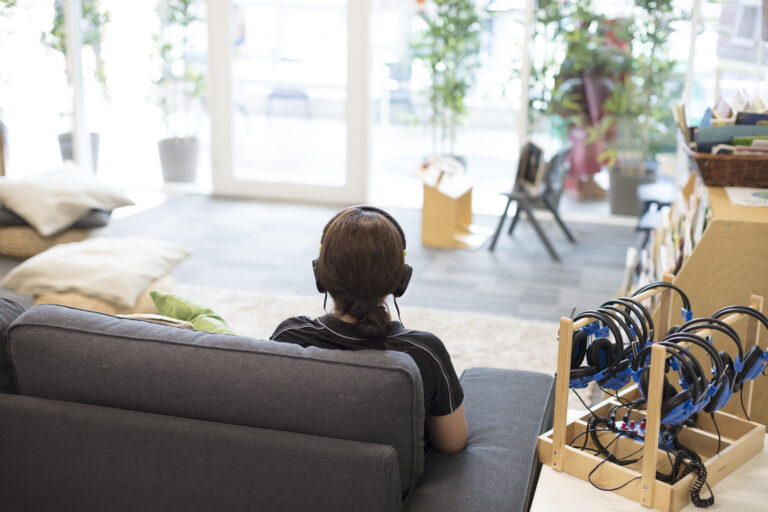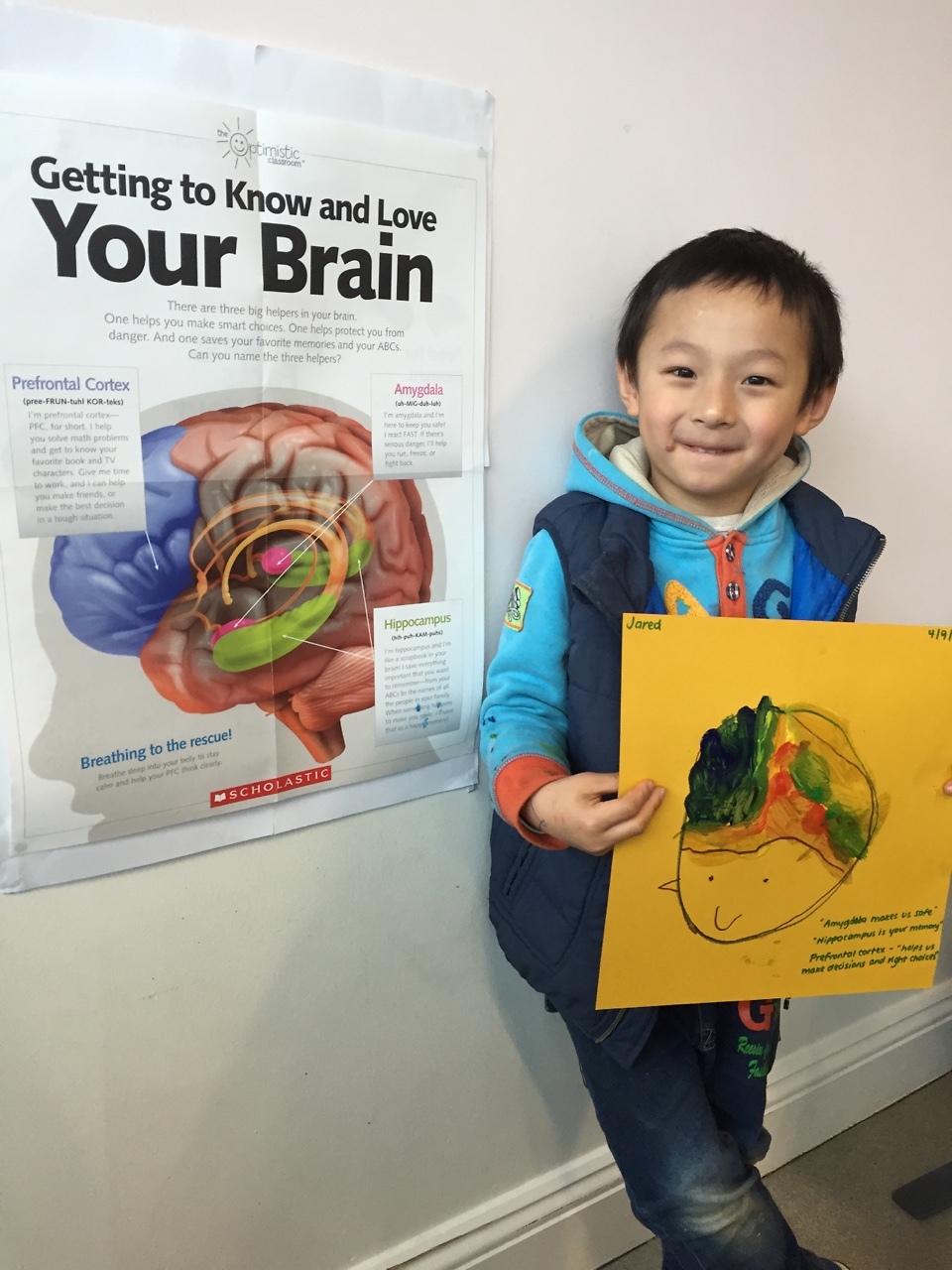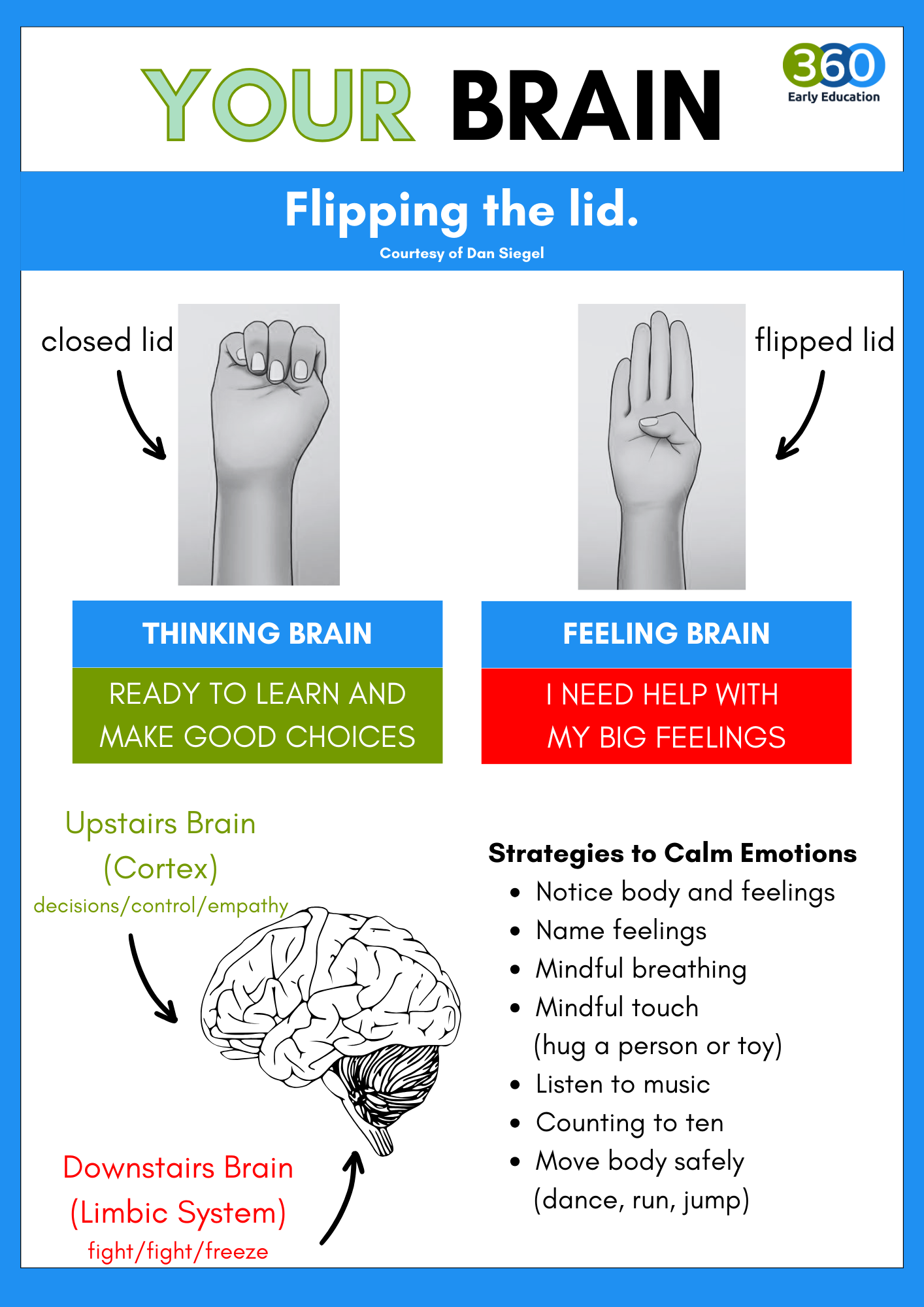
Emotion Coaching is one of 360’s core programs. Through mindfulness, children learn to reflect on what they are experiencing without judgement; they learn to simply notice. Through Emotion Coaching, we support children as they notice, and then name and process, what’s going on with their body and minds when they experience big emotions.
At home, you might start to see children using some of the language that they are picking up through this practice.
Educators are taught to identify ‘affect clusters’, or groups of characteristics that give clues about how a child is feeling. They then use Stem Statements, or a toolkit of flexible phrases to show the child that they are heard, that their feelings matter, and that they are not alone. Stem statements are not questions; they are carefully worded phrases that empower children to recognise and accept their feelings.
Statements you might hear us say are:
- “I can see you’re very angry.”
- “You really miss mum right now.”
- “You feel like lunch is taking a long time!”
- “I can see tears in your eyes and a frown on your face, it looks like you’re feeling very sad.”
- “It looks like it’s really tricky for your feet to stop running! You must be really excited!”
In 360 services, educators are taught about neuroscience and how to emotion coach so that they can then teach children the lifelong skill of emotional regulation. We find our children really enjoy learning about the brain, and this is learning that families can implement at home too!

360 Early Education Preschool Children learning Neuroscience
Neuroscience in Action!
Think of your brain as two parts. The Upstairs, and the downstairs. The Upstairs brain (cortex) is the part that does the thinking. When we make decisions, critically reflect, plan and create, we’re using this “top” part of our brain – think ‘higher’ order skills.
The downstairs part of our brain is where our impulses and instincts lie. This is our “limbic system” and is designed to keep us safe. It’s also where we are most reactive and emotionally charged.
Dan Siegel is a clinical professor of psychiatry who tells us to think of our brain like a hand. Our fingers represent our cortex, and our thumb represents our limbic system. You might have heard your child referring to their amygdala. Hold up your hand and tuck in your thumb, or your amygdala, and then fold down your fingers to keep that amygdala controlled and connected to the ‘upstairs’ brain.
Now lift your fingers up. When our cortex is disconnected from our limbic system, when we “flip our lid”, these big emotions can feel totally out of control. An adult’s job is to help the child’s name and tame their emotions.
A trusted adult, educator or parent can coach the child through the emotion, with mindful breathing, communication and focus, and together we can bring that lid back down. We highly recommend our families to try this at home!


